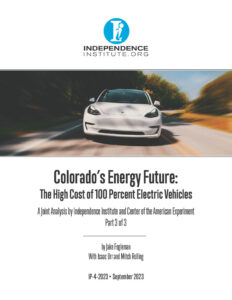In August 2022, California became the first jurisdiction anywhere in the world to ban the sale of gas-powered vehicles, setting a deadline of 2035 to phase them out completely. Just one week later, the state was forced to call on its residents to avoid charging their electric vehicles because the state’s grid was at imminent risk of facing blackouts.
While the state’s appeal to its residents was successful, and blackouts were fortunately avoided, the incident highlighted the growing contradictions in energy policy as governments become increasingly concerned with addressing climate change. Policymakers are increasingly mandating their citizens to replace their gas-powered vehicles and appliances with electric alternatives while simultaneously making electricity generation more expensive and unpredictable.
Despite the irony in California’s experience, other progressive jurisdictions have followed the state’s example. In the last year, eight more states have decided to join the Golden State in banning the sale of gas-powered vehicles by 2035.
Colorado appears to be set on a slightly softer approach for now, as it is currently considering requiring 80 percent of all car sales to be electric by the next decade rather than the total mandate preferred by California.
With so much policy momentum in Colorado and elsewhere dead set on forcing a transition to electric vehicles, and with California’s ill-fated rollout of its gas vehicle ban as a case study of what can go wrong, it’s become critical to evaluate the costs and grid reliability impacts such a transition would incur.
With the help of detailed modeling commissioned by the Independence Institute and conducted by energy researchers at the Center of the American Experiment, this report aims to put a price estimate on the state’s goal of transportation electrification, focusing specifically on light-duty vehicles while evaluating the grid reliability implications that come with it.
Building on the work done in parts one and two of this series, it will examine the cost of transitioning Colorado’s internal combustion engine (ICE) fleet to battery electric, with electrified home heating, on a 100 percent renewable powered electric grid.
As in part one, this study also assesses an alternative scenario called the “Lower Cost Decarbonization” (LCD) scenario. This scenario meets the same electrification and grid decarbonization outcomes using new nuclear power plants — both the traditional, gigawatt-scale plants currently generating roughly one-fifth of the country’s electricity, and innovative small-modular reactors (SMRs).










